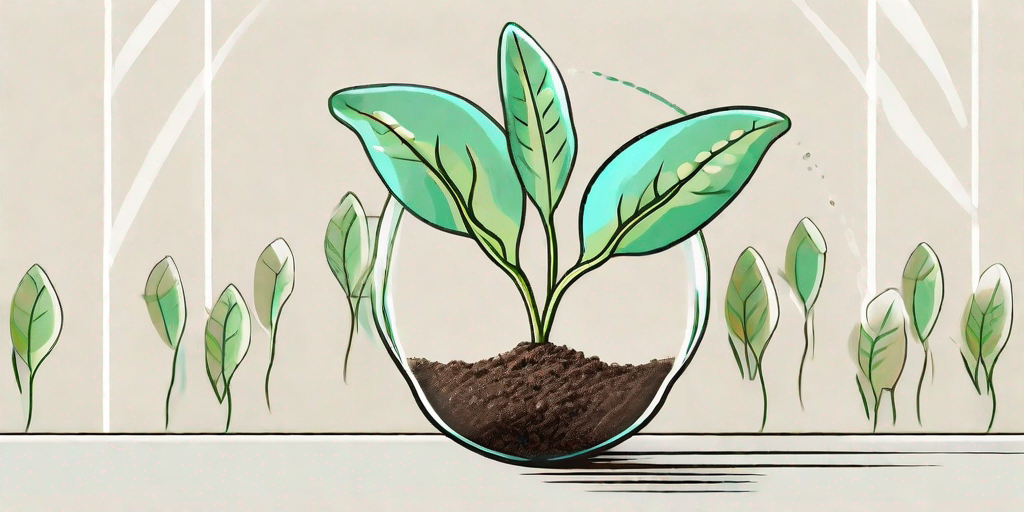
Welcome to the world of home gardening, where the thrill of nurturing a tiny seed into a flourishing plant is second to none. Today, we're going to embark on a journey of growing pinto beans right in the comfort of your own home. You might be thinking, "Pinto beans? Really?" But trust us, these little fellas are not only a great source of protein, but they're also pretty fun to grow. So, put on your gardening gloves and let's get started!
Understanding Pinto Beans
Before we dive into the nitty-gritty of planting, let's take a moment to appreciate the humble pinto bean. These beans are a type of common bean that have a mottled skin, hence the name 'pinto', which means 'painted' in Spanish. They're a staple in many cuisines, particularly in Mexican dishes. Plus, they're packed with nutrients like fiber, protein, and vitamins. So, not only will you be growing a fun plant, but you'll also be cultivating your own nutritious food source.
Now, you might be wondering, "Why should I grow pinto beans at home when I can just buy them from the store?" Well, dear reader, growing your own beans is not only a rewarding experience, but it also ensures that you know exactly where your food is coming from. Plus, it's a great way to impress your friends with your green thumb!
Getting Started with Pinto Beans
Choosing the Right Seeds
First things first, you need to get your hands on some pinto bean seeds. You can find these at your local garden center or online. When choosing seeds, make sure they're certified organic and non-GMO. This ensures that your beans will be as healthy and natural as possible.
Also, take a moment to inspect the seeds. They should be free from any signs of mold or damage. Remember, a healthy seed equals a healthy plant!
Preparing the Soil
Pinto beans aren't too picky about soil, but they do prefer a well-draining soil with a neutral pH. You can test your soil's pH with a kit from your local garden center. If your soil is too acidic or alkaline, don't fret! You can easily adjust it with lime or sulfur.
Additionally, pinto beans love a good dose of compost. So, before planting, mix some compost into your soil. This will provide your beans with the nutrients they need to grow strong and healthy.
Planting Your Pinto Beans
Now that you've got your seeds and your soil ready, it's time to get planting. Plant your seeds about 1 inch deep and 2 inches apart. Then, cover them with soil and give them a good watering. Be careful not to overwater, though. Pinto beans don't like to have wet feet!
After planting, you should see your beans sprout in about 7 to 14 days. Once they sprout, make sure they get plenty of sunlight. Pinto beans love the sun!
Caring for Your Pinto Beans
Watering
When it comes to watering, pinto beans prefer a 'less is more' approach. Water your beans when the top inch of soil is dry. Overwatering can lead to root rot, which is a surefire way to kill your beans.
However, don't let your beans dry out completely. They still need moisture to grow. So, find a balance between not too much and not too little water. It's a bit like Goldilocks, but with beans!
Feeding
Pinto beans are pretty low maintenance when it comes to feeding. They're legumes, which means they can fix their own nitrogen from the air. However, they still appreciate a good feeding of compost or organic fertilizer every now and then.
Feed your beans once they start to flower. This will give them the extra boost they need to produce a bountiful harvest.
Harvesting Your Pinto Beans
After all your hard work, it's finally time to reap the rewards. Pinto beans are ready to harvest when the pods are fully mature and have started to dry out. Simply pick the pods from the plant and let them dry out completely before shelling.
Once shelled, store your beans in a cool, dry place. They can be stored for up to a year, so you'll have plenty of time to enjoy your homegrown beans.
Frequently Asked Questions
- How long does it take for pinto beans to grow?
It takes about 90 to 150 days for pinto beans to grow from seed to harvest. - Can I grow pinto beans in a pot?
Absolutely! Pinto beans can be grown in pots. Just make sure the pot is deep enough for the roots and has good drainage. - Do pinto beans need a lot of sun?
Yes, pinto beans love the sun. They need at least 6 hours of sunlight a day. - What do I do if my pinto beans aren't growing?
If your beans aren't growing, it could be due to a number of reasons. They might not be getting enough sun, the soil might not be well-draining, or they might be getting too much or too little water. Try adjusting these factors and see if it helps.
And there you have it, a comprehensive guide to growing pinto beans at home. With a bit of patience and care, you'll be harvesting your own beans in no time. So, what are you waiting for? Get out there and start planting!











